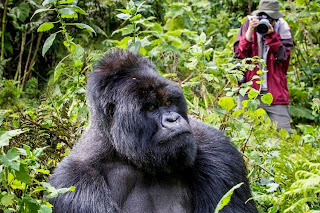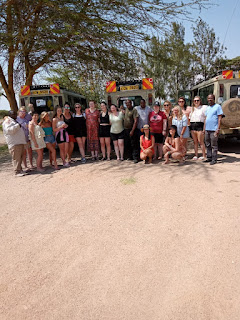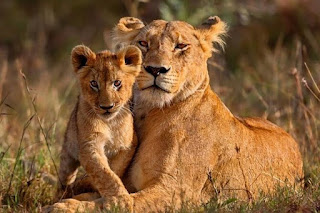Africa most famous Reserve
Africa most famous Reserve
Africa's most famous national reserve, The Masai Mara runs
along with the country's southwest border with Kenya. Just across the border from
Tanzania`s Serengeti National Park. This gigantic ecosystem is shared by the
two neighboring, and protected with a combination of National reserves and
communities that run the conservation areas.
Due to the rains, the vast herds arrive from Tanzania
sometime between August and November each year, crossing some of Africa`s most
famous, and the sinister patience of the predators that follow the herd all
combine to form a pic life, and death saga that plays out beneath Kenya`s vast
skies.
Masai Mara offers a wide choice of accommodation, ranging from budget tented camps, mid-range, luxury, and high-end accommodations. Some are located inside in private conservancies, inside the reserve, along the mara river, and outside the Masai mara game reserve. Masai mara game reserve is not fenced, meaning that game moves freely between the reserve and the conservancies, creating one vast wildlife area. During winter (June to September) and the wildebeest migration months, the Masai mara becomes very busy and wildlife sightings become very crowded, with safari jeeps gathering to witness annual wildebeests migrating from Serengeti to Masai Mara. During this period mara river crocodile and Masai mara lions get good opportunities for kills. During this quieter summer month and the green season (when there are heavy rains, particularly between March and June) The reserve is much quieter, and visitors feel as though they have the Mara to themselves. Although the big herds of the Great Migration have moved off by this time, the abundant resident game can still be seen and the wildlife sightings still rival anywhere in the world.
Why visit Masai Mara
(a)
Great annual Wildebeest Migration – One of
nature`s biggest wildlife spectacles is the wildebeest migration, the animals
cross the Mara River for the Masai Mara between Late July and late October.
(b)
Glide over the Masai Mara in a Hot Air Balloon
followed by an indulgent champagne breakfast celebration.
(c)
Home to over 450 birds species.
(d)
Wildlife haven, with Big five regularly sported
on game drives.
(e)
Breath-taking views of the open plains
(f)
The Masai Mara Ecosystem holds one of the
highest ion densities in the world.
(g)
See Masai herdsmen graze their cattle side by
side with predators and prey.
(h)
Masai Mara is the best park for photography in
Kenya
Climate
Summer (October- April)
Daytime temperatures above 34 degrees
Winter (May – September)
The nighttime temperature rarely drops below 11 degrees




Comments
Post a Comment